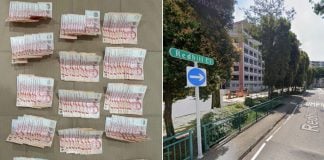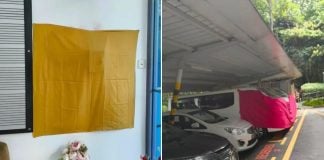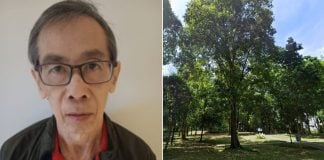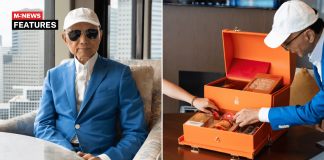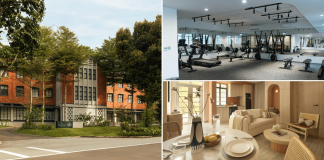Air Force Engineer Brothers Participate In Exercise Forging Sabre 2023 (XFS23) In The US Together
Travelling overseas for work is a superb opportunity to broaden your horizons, improve your skills, and accumulate a wealth of valuable experience.
However, being away from friends, family, and familiarity for a long time can feel incredibly lonely. The best scenario, of course, would be if your loved ones somehow get to be there with you.
Two brothers, Military Expert 3 (ME3) Yew Boon Leng and Military Expert 2 (ME2) Yew Boon Siong, were fortunate to have this — the Air Force Engineers (AFEs) from the Republic of Singapore Air Force (RSAF) were deployed together to RSAF detachments in the United States (US).

ME2 Yew Boon Siong (left) and ME3 Yew Boon Leng (right)
Image courtesy of MINDEF
While they’re based in different states most of the time, they recently reunited in Idaho for this year’s Exercise Forging Sabre (XFS23), a Singapore Armed Forces (SAF) integrated sense and strike exercise.
MS News caught up with the siblings over Google Meets to learn how their training has been going and what it’s like to work with a close family member (hint: it’s pretty awesome).
Brothers decided to join RSAF full-time during BMT
Like any other Singaporean son, Boon Leng and Boon Siong had to enlist in National Service (NS). It was then that they discovered their interest in joining the RSAF full-time.
“Actually, I decided to sign up during my Basic Military Training (BMT),” said elder brother Boon Leng, 35, an AFE specialising in supply chain and logistics.
At that time, the different services were having a roadshow and the RSAF caught his attention. He took up the AFE vocation since he had always been eyeing a uniformed career because of his desire to serve the country.
A few years later, it was Boon Siong’s turn to join NS, and he was also doing his BMT when he attended a career talk by the RSAF.
Having heard nothing but positive anecdotes from his big brother about working in the Air Force and also looking up to him as a role model, Boon Siong decided to take the leap and join the RSAF as well, becoming an F-16C/D Air Force Engineer (Maintenance).

Image courtesy of MINDEF
Boon Leng joked that his brother also “copied” him by attending the same school, Singapore Polytechnic.
But the former graduated with a Diploma in Mechanical Engineering while the latter studied Mechatronics.
Deployed to the US about a year apart
By the time XFS23 kicked off last month, the Yew brothers had lived in the US for some time.
Boon Siong was the first to be deployed there and has been based in Luke Air Force Base in Phoenix, Arizona, since November 2021. He is part of Peace Carvin II (PC II), which operates the F-16C/D fighter aircraft and is the RSAF’s longest-running overseas detachment.

Boon Siong at PC II’s National Day celebration in 2022
Image courtesy of Yew Boon Siong
He applied for the post as soon as one opened up and was accepted as he met the criteria and qualifications for the appointment.
This time, it was Boon Leng’s turn to ‘follow’ his little brother.
He attended interviews for appointments in PC II and Peace Carvin V (PC V) after supply chain posts became available. He was selected for the latter, which is based in Mountain Home Air Force Base, Idaho, and operates the F-15SG fighter aircraft.

Boon Leng with his team from PC V
Image courtesy of Yew Boon Leng
However, with the states they’re in being about a two-hour flight apart, the brothers didn’t have the chance to meet in person till XFS23, which took place from 11 to 30 Sep.
A long-awaited reunion thanks to XFS23
Travelling to Idaho didn’t just let Boon Siong reunite with his big brother.
As it happens, Boon Leng’s wife and daughter travelled to the US with him during his deployment, so Boon Siong finally got to see his niece, who sorely missed him.

The brothers reunited during the XFS23 period with Boon Leng’s wife and daughter
Image courtesy of Yew Boon Leng
It had been around one or two years since the five-year-old girl had last seen her beloved uncle, so she could not stop holding his hand, according to her dad, who good-naturedly quipped that he was completely forgotten by his daughter once his brother was around.

Image courtesy of Yew Boon Leng
When we asked if it’s been tough on his family to be so far away from home, Boon Leng said his wife has no trouble adapting as she accompanied him on his previous posting to the Peace Prairie detachment in Texas, where he supported the Chinook helicopters.
While they were initially worried about their daughter, their fears turned out to be unfounded as the little girl is doing fine too and was thrilled to see snow for the first time last winter.
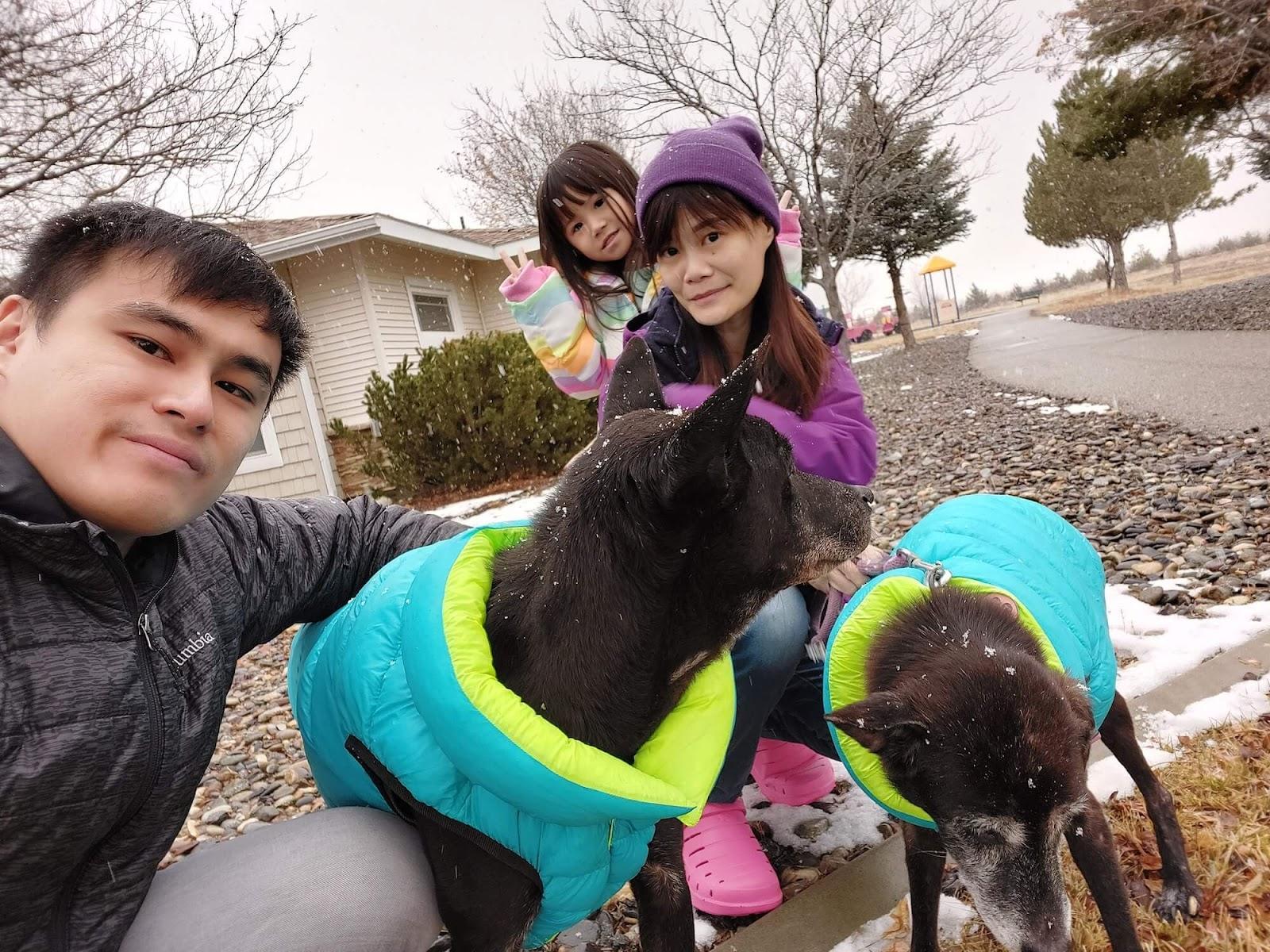
Image courtesy of Yew Boon Leng
Once his three-year detachment ends in 2025, Boon Leng and his family will all return to Singapore. Boon Siong will be back slightly earlier in 2024.
Tasked with logistics & maintenance at XFS23
At the time of our interview, the brothers were already about halfway through XFS23, which is held biennially.
This year marked the ninth edition of the series, which began in 2005, and was held at Mountain Home Air Force Base.
The Idaho air base is a United States Air Force (USAF) installation with sprawling training airspace over 20 times the size of Singapore – perfect for realistic, large-scale military training like XFS23.
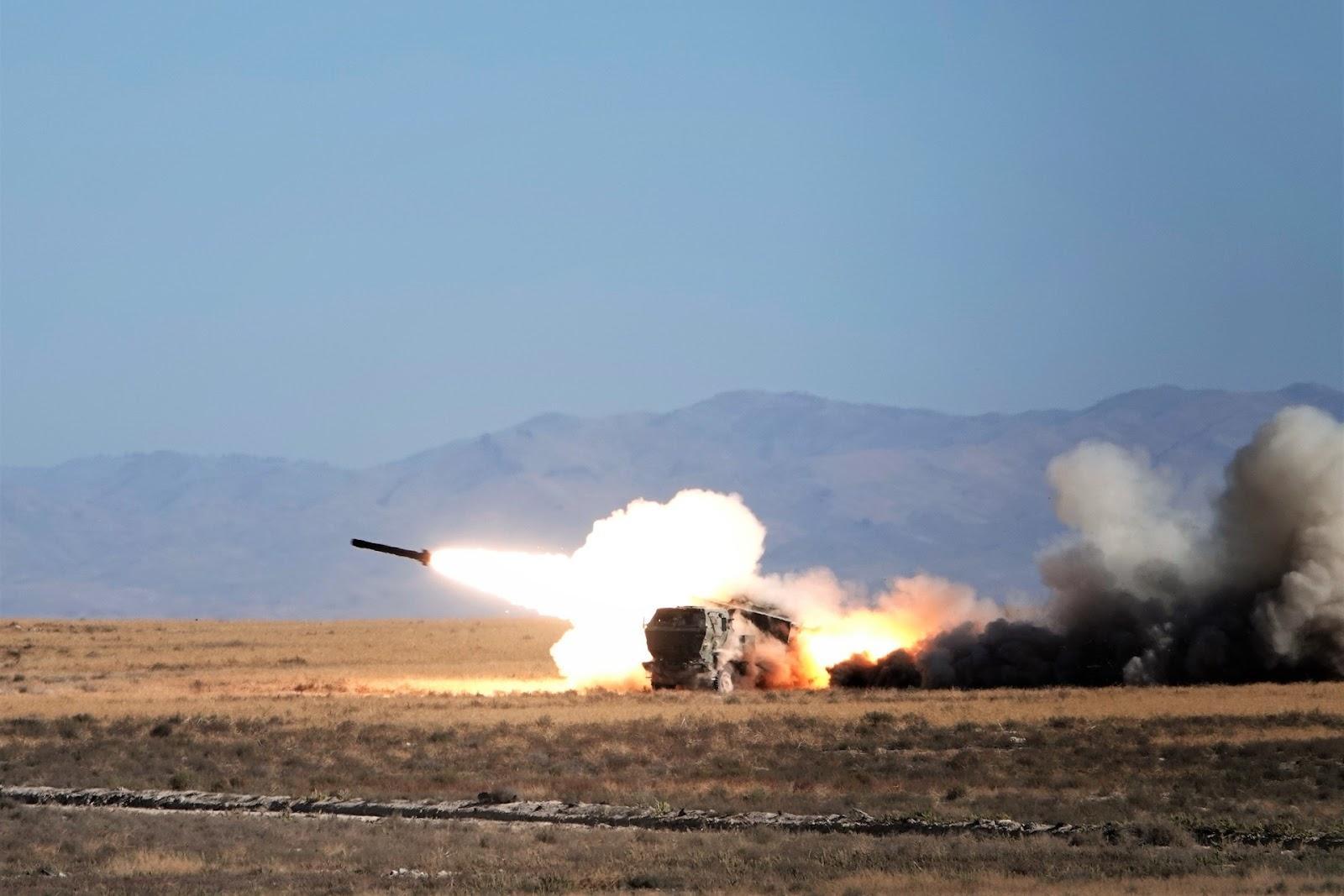
Source: MINDEF
As AFEs, Boon Leng and Boon Siong were tasked with providing vital support to the air crew.
Boon Leng handled the supply chain and logistics for the exercise.

Boon Leng at XFS23
Image courtesy of MINDEF
This involved a lot of coordination between various platforms to ensure that assets like the Heron 1 Unmanned Aerial Vehicle (UAV) and Multi-Role Tanker Transport were safely brought over from Singapore to the US.
Even platforms such as the F-16C/D fighters and Apache attack helicopters had to be deployed from a different state.
Boon Siong, on the other hand, was part of the maintenance crew.

Boon Siong at XFS23
Image courtesy of MINDEF
His day-to-day duties included preparing the aircraft every morning and rectifying any defects before they took to the skies.
The perks of working with family
Despite being in service at the RSAF for over a decade (Boon Leng for 15 years and Boon Siong for 12 years), both brothers still encountered new challenges during XFS23.
This allowed them to stretch their capabilities and do things they might not have gotten to back in Singapore.
For instance, Boon Leng had to “level up” to effectively manage so many different units and platforms.
“Back in Singapore, Supply Chain engineers focus on supporting the assets we have in our respective bases,” he elaborated. “But during XFS, there are many different assets from different platforms deployed here, so it’s a whole new experience.”
As for Boon Siong, his main challenge was the logistics of prepping for such a large-scale exercise and ensuring that all the participating F-16s would be ready for the aircrew.
Fortunately for him, Boon Leng is part of the supply chain team.

Image courtesy of MINDEF
“He has a brother here, so I can help him,” Boon Leng chuckled. “Whenever he needs anything, he’ll just text me, and I’ll help. Anyway, his detachment’s operating hangar is just beside my office.”
Sometimes, Boon Siong will even ask for Boon Leng’s help on behalf of his colleagues. “He’s my brother, so I buay paiseh,” he laughed.
Work matters aside, having such a close family member to confide in is a huge plus and can help alleviate any homesickness — even though their parents initially weren’t so happy to have their sons be away for so long.
“When I told our mum I was also coming here with my whole family after Boon Siong, she got a bit upset,” Boon Leng recalled.
Thanks to technology, the brothers can keep in touch via video calls and messaging apps so their folks can rest assured they’re well.
“I’m sure they’re proud of us.”
XFS23 about conducting integrated smart warfighting
Boon Leng and Boon Siong are two of about 1,100 personnel who participated in XFS23, which — as they also mentioned — allowed the SAF to conduct their training on a scale, scope, and complexity that wouldn’t be possible in Singapore.
Something special about this year’s exercise was the inaugural participation of the Digital and Intelligence Service (DIS) — the fourth arm of the SAF after the Army, Navy, and Air Force.

Image courtesy of MINDEF
Together with the other services, they form an integrated and technologically advanced fighting force, sharpening the SAF’s sense and strike capabilities while validating its ability to conduct integrated smart warfighting during the exercise.
Here’s an overview of how it works: first, aerial and ground sensors from the RSAF and Army gather intelligence about enemy forces by scanning the battlefield. They then provide a comprehensive picture of the situation to the integrated command post.
The DIS then takes this information and works with the other services to use digital capabilities and intelligence analysis to enhance the SAF’s battlefield situational awareness, so they know exactly what they’re up against before deploying the appropriate weapons. Boom.

Source: MINDEF
These weapons include the Army’s High Mobility Artillery Rocket System (HIMARS), which can fire rockets to destroy enemy targets up to 70km away.
There’s also the Commando and STORM teams on the ground, along with the Heron 1 UAVs in the air — together, they conduct cooperative lasing with the RSAF’s Apache attack helicopters as well as the F-15SG and F-16C/D fighters.
This means that they use lasers to provide bomb guidance to the strike assets so that they can destroy identified targets accurately.
Technological upgrades make strikes better & more efficient
Another exciting new feature in this year’s exercise was an upgraded version of the Command and Control Information System (CCIS).
The CCIS was first deployed during XFS two years ago and combines analytics, intelligence, and algorithms to create warfighting solutions for commanders to make quick and informed decisions to annihilate threats.

Source: MINDEF
It has now undergone some major improvements, including the introduction of an algorithm that translates real-time intelligence into vivid visual landscapes, pinpointing precise zones where strikes can be executed with surgical precision.
All while drastically minimising unintended collateral damage.
The CCIS is now equipped with the remarkable ability to craft multiple target solutions and a live weather module, empowering commanders to account for the ever-changing elements in their strategic deliberations.
There are many more cool features that got to be tested at XFS, so to read more about what went down, visit PIONEER’s website here.
You can also follow MINDEF on Instagram for all the latest updates and more exciting content.
Hats off to our brave men & women overseas
Living in Singapore, it can be easy to take safety and security for granted.
But the truth is that there are some very real threats out there, which is why it’s so important to hold regular training exercises to ensure that our country’s defence capabilities are up to par.
Being away from home and all you know and love for an extended period can be challenging, which is why we tip our hats to people like Boon Leng and Boon Siong, who work hard to hone their skills to better support the fighting force.
This post was brought to you in collaboration with MINDEF.
Featured image courtesy of MINDEF.


